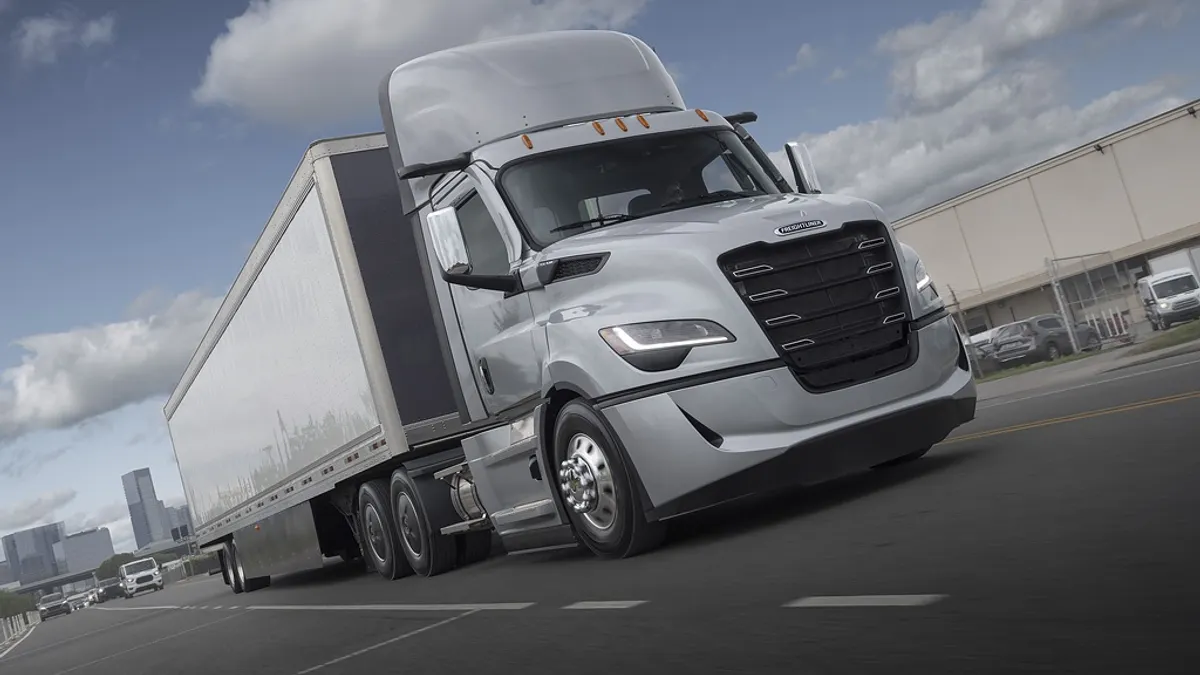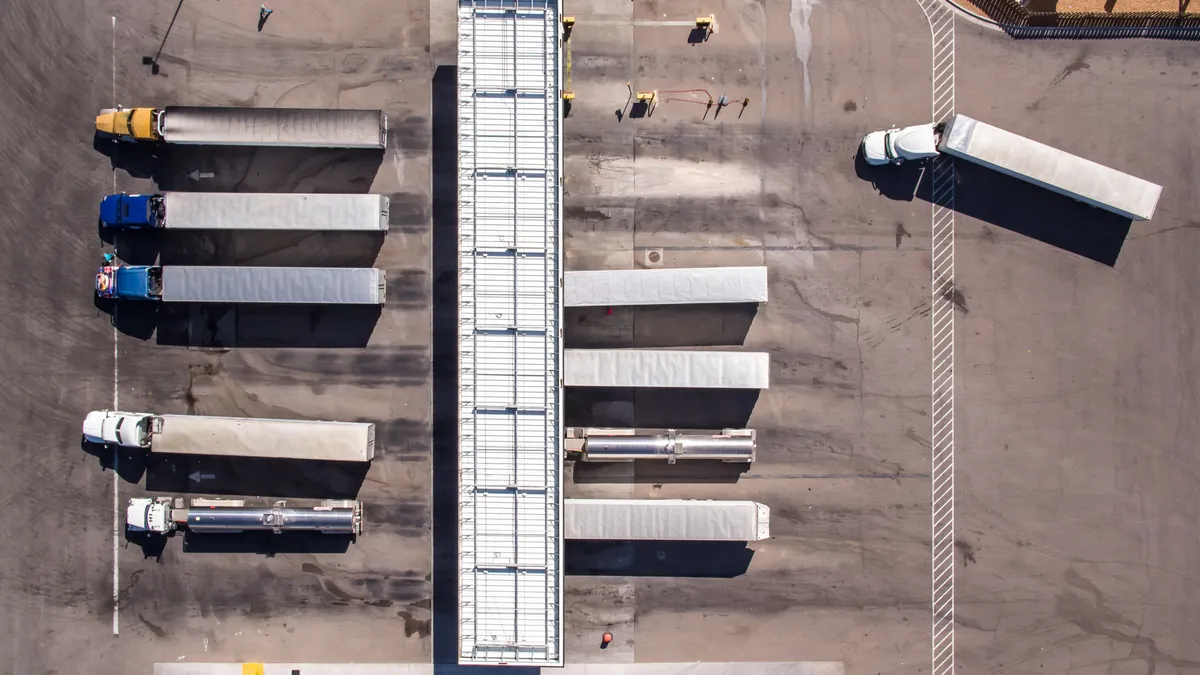Dive Brief:
- Daimler Truck North America sales declined by 20% and orders fell by more than 50% in Q2 as its customers continued to grapple with a dynamic market environment, executives said during the company’s earnings call held Aug. 1.
- As a result, the manufacturer lowered its 2025 guidance, and now expects to sell between 135,000 to 155,000 units in North America, down from the 155,000 to 175,000 units forecasted as of May and 180,000 to 200,000 as of March.
- “I think our customers are probably mostly concerned with what happens with the American economy because that drives the need for transport or not,” Daimler Truck CEO Karin Rådström said during the call. “It's rather that when there is this continued uncertainty. It's difficult for them — more difficult than normal — to predict how freight volumes will develop and therefore how to gear their investments.”
Dive Insight:
Due to a lack of demand, Daimler is scaling back production in North America, projecting a 20% drop in truck volumes this quarter in comparison to Q2.
In recent weeks, the truck maker has reduced its headcount by 2,000 people in the U.S. and Mexico, executives confirmed during the call, noting that it was a mix of white- and blue-collar workers. The company, which builds Western Star and Freightliner trucks, has manufacturing facilities in Oregon, North Carolina, South Carolina, and Mexico, per its website.
That decline in demand is reflected by Daimler’s revised guidance, but that outlook also assumes a recent uptick in ordering activity continues.
“Every week counts when it comes to orders,” CFO Eva Scherer said. “And the positive thing is that orders did pick up in July compared to June. And so expecting that this or hoping and assuming that this momentum continues is obviously the base for our full-year guidance.”
However, Daimler Truck North America also saw an improvement in orders in May versus April, before another backslide in June. For reference, the segment reported 13,842 incoming orders in Q2, compared to 29,604 orders during the same period last year, according to Daimler’s earnings presentation.
“It is still a very volatile environment, and that's why we said it's a bit too early to call it a trend, and we will keep on monitoring it closely,” Scherer said of the July increase.










